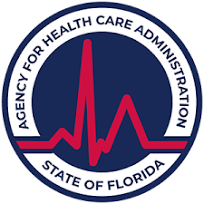Commonly Abused Drugs
Do you have questions about a particular substance? We’ve compiled an index of information about commonly misused stimulants, depressants, and hallucinogens.

When you first notice the signs of addiction within your household, you may wonder what it is that your loved one has gotten themselves into. If you would like to learn more about the risks and side effects associated with each drug, we encourage you to read our comprehensive article below.
If your loved one is in dire need of intervention, we ask that you contact Augustine Recovery as soon as possible. Our admissions team will assess your needs, answer your questions, and help you to develop a personalized treatment plan for your loved one.
Alcohol
Because it is legal and sold widely, many people falsely believe that alcohol is harmless. In reality, alcohol is the most commonly misused substance in the world. People drink to celebrate and socialize, but unfortunately, this substance can lead them down a slippery slope of addiction. Excessive alcohol use is liked to cirrhosis of the liver, certain types of cancer, and cardiac arrhythmias, and is responsible for more than 95,000 deaths in the US each year.
Signs of Alcohol Abuse: slurred speech, empty bottles, smelling alcohol on their breath, irritability, drinking too often or at inappropriate times, mood swings, and blackouts.
Cocaine
Created from the leaves of the South American coca plant, cocaine is a powerful stimulant drug that may appear as a white powder or rock crystal. It is smoked, snorted, or injected. In the short term, cocaine creates a sense of alertness and increases body temperature, blood pressure, and heart rate. It may cause users to experience a seizure, heart attack, stroke, or coma. Over time, people addicted to cocaine may lose their sense of smell, create damage to their nasal cavities, and experience severe weight loss.
Signs of Cocaine Abuse: sniffling, constant runny nose, dilated pupils, erratic behavior, and hyperactivity.
Hallucinogens
Hallucinogenic drugs are a broad class of substances which significantly alter a person’s perception of reality. Drugs within this category may be extracted from plants or fully synthetic. They include psilocybin (mushrooms), mescaline (peyote), ketamine, LSD, DMT, salvia, PCP, and ayahuasca. Long-term abuse of hallucinogens can lead to a condition called persistent psychosis, which is characterized by ongoing visual disturbances, paranoia, mood changes, and disorganized thinking.
Signs of Hallucinogen Abuse: spending a lot of time using and recovering from hallucinogens, nausea and vomiting, dilated pupils, losing touch with reality, delusions, paranoia, poor focus, hallucinations, and amnesia.
Heroin
This opioid drug is made from morphine, which is a natural substance extracted from opium poppy plants. Heroin may be injected, smoked, or snorted, and it carries a number of negative side effects and long-term health risks. In the short term, users may feel euphoria, in addition to itching, nausea, vomiting, depressed respiratory function, and a slowed heart rate. Long-term abuse increases the likelihood of collapsed veins, abscesses, gastrointestinal problems, liver and kidney disease, pneumonia, and an infection of the lining and valves of the heart.
Signs of Heroin Abuse: nodding off mid-conversation, needle marks (if injected), finding paraphernalia, sniffling or runny nose (if snorted), slow or irregular breathing, itching and fidgeting, constipation, pinpoint pupils, and slurred speech or seeming “goofy.”
Inhalants
Inhalant drugs are not often discussed, but they have a high potential for abuse, especially among young people. Solvents, aerosols, and gases from household products – markers, glues, cleaning fluids, and spray paints – may all be addictive. Whippets, paint thinners, nitrous oxide, and even prescription nitrites may be inhaled through the nose and mouth. This may result in confusion, loss of coordination, nausea, slurred speech, dizziness, lightheadedness, and hallucinations or delusions. However, extremely serious side effects are possible. People who use inhalants are at a high risk of death from asphyxiation, suffocation, convulsions, seizures, coma, and choking. Those who abuse these drugs for a long period of time may suffer brain damage due to oxygen deprivation.
Signs of Inhalant Abuse: chemical odors (on clothing or breath), paint or other stains (on clothes, face, or hands), finding empty spray paint or solvent containers, finding chemical-soaked rags or clothing, disorientation, nausea, lack of coordination, irritability, and slurred speech.
Kratom
Kratom is not currently an illegal substance, but it is sometimes sold in packets labeled “not for human consumption.” This drug is derived from the tropical tree Mitragyna speciosa, whose leaves contain psychotropic compounds. Most people take it as a capsule, pill, or extract, but it can be smoked or made into tea. Its use may result in unwanted side effects like dry mouth, constipation, loss of appetite, nausea, and even seizures. While this drug is not yet outlawed, it carries a high potential for abuse and may be laced with other dangerous substances.
Signs of Kratom Abuse: hallucinations, seizures, psychosis, excessive itching or sweating, weight loss, delusions, insomnia, aggression, and jerky movements.
Marijuana (Cannabis)
Now legal in many states, marijuana is derived from the hemp plant Cannabis sativa. This drug is popular due to THC: a psychoactive chemical also known as delta-9-tetrahydrocannabinol. Marijuana may be smoked, vaped, or eaten in the form of edibles. Health effects include slowed reaction time, reduced coordination, increased heart rate, anxiety, problems with learning and memory, and frequent respiratory infections.
Signs of Marijuana Abuse: red (bloodshot) eyes, increased appetite, seeming giggly or laughing at nothing, paranoia or anxiety, slowed reaction, dry mouth, impaired coordination, and lack of motivation.
MDMA
Also called ecstasy or molly, MDMA is a synthetic, psychoactive drug with stimulant and hallucinogenic qualities. It usually takes the form of colorful tablets, capsules, powder, or liquid, and can be snorted or swallowed. MDMA is considered a party drug and causes changes to sensory perception, inhibition, heart rate, blood pressure, sweating, and body temperature. Long-term or improper use may result in lasting confusion, depression, attention deficit, memory problems, anxiety, impulsivity, kidney failure, overheating, and death.
Signs of MDMA Abuse: dilated pupils, unnaturally high energy level, inability to feel pain, paranoia, teeth clenching, muscle tension, impulsiveness, dry mouth, confusion, excessive sweating or thirst, and promiscuity.
Methamphetamine
Meth is an extremely addictive stimulant amphetamine drug. It may take the form of a powder or pill. Crystal meth looks like pieces of glass or shiny “rocks” of varying sizes. Meth causes a cycle of binging and crashing; users experience increased wakefulness, physical activity, and decreased appetite during the binge phase. When they inevitably crash, after anywhere from three to fifteen days of binging, they may begin “tweaking.” Tweaking is characterized by intense itching, psychosis, vivid hallucinations, hostility, and potential for self-mutilation. This precedes the crash, during which the addict will sleep for one to three days. The cycle of meth abuse is particularly devastating.
Signs of Meth Abuse: paranoia, intense scratching, severe weight loss, erratic behavior, delusions, severe weight loss, dental problems, and acne or skin sores.
PCP
This dissociative drug causes users to feel detached from reality. PCP is an abbreviation of phencyclidine, but it is also called angel dust, and this substance may be injected, swallowed, smoked, or snorted. Its abuse is characterized by severe hallucinations and delusions, which may result in memory loss, violence, or impulsive behaviors that a person would not normally consider.
Signs of PCP Abuse: seeming either sedated or chaotic, physically fighting with others, blank stare (1000-yard stare), slurred speech, numbness, stuttering, muscle spasms, hallucinations, paranoia, and losing the ability to tell reality from a delusion.
Prescription Opioids
Opioid medications, while originally meant to help cancer patients to manage pain, have a high addictive potential. These drugs cause euphoria and also result in the quick development of a tolerance. This means that individuals must take higher dosages in order to achieve the same effect. Hydrocodone (Vicodin, Norco), hydromorphone (Dilaudid), meperidine (Demerol), morphine, and oxycodone (OxyContin, Percocet) are commonly misused. Fentanyl, a synthetic opioid one hundred times more powerful than morphine, has recently become more common in the United States. Opioids are particularly dangerous because of their respiratory suppressive properties. When people take these substances in high amounts, their breathing and heart rate may slow to dangerous levels, resulting in a deadly overdose.
Signs of Prescription Opioid Abuse: confusion, poor coordination, increased sensitivity to pain (hyperalgesia), nausea, euphoria, drowsiness, constipation, and pinpoint pupils.
Prescription Stimulants
Stimulants are typically prescribed in instances of attention deficit disorder (ADD) and attention deficit hyperactivity disorder (ADHD). They are intended to boost alertness, energy, and attention. However, they are frequently diverted and used by those who do not have these diagnoses – especially students on college campuses. Short-term abuse of prescription stimulants like Adderall (amphetamine) and Ritalin (methylphenidate) may result in increased blood pressure and heart rate, along with a boosted blood sugar. Long-term misuse may lead to heart problems, anger, paranoia, and psychosis.
Signs of Prescription Stimulant Abuse: abnormally high energy level (hyperactivity), becoming hyper-focused, restlessness, dilated pupils, weight loss, excessive sweating, aggressiveness, mood swings, rapid heartbeat, flight of ideas and racing thoughts, and anxiety.
Proven Addiction Treatment in St. Augustine, Florida
We hope that this page has provided you with some useful information about various substances. At Augustine Recovery, we understand what it takes to guide a person to recovery from opioids, stimulants, and depressants. We have years of expertise in helping those addicted to licit and illicit drugs. If you have any questions about substance abuse, treatment, and recovery, we encourage you to reach out today.
Benzodiazepines
Benzodiazepines are a class of medications that work in the central nervous system and are used for a variety of medical conditions, such as anxiety, seizures, and for alcohol withdrawal. Benzodiazepines work by blocking excessive activity of nerves in the brain and other areas in the central nervous system.
As a class, benzodiazepines are similar in how they work in the brain but have different potencies and durations of actions. Because of this, some benzodiazepines work better than others in the treatment of particular conditions.
Signs of Benzodiazepines Abuse: Weakness, blurred vision, drowsiness, poor judgment or thinking, doctor shopping, asking friends, family, colleagues, and/or classmates for their benzodiazepine pills, wanting to cut back on the volume of abuse but not being able to do so, and mood changes.
Fentanyl
Pharmaceutical fentanyl is a synthetic opioid, approved for treating severe pain, typically advanced cancer pain.1 It is 50 to 100 times more potent than morphine. It is prescribed in the form of transdermal patches or lozenges and can be diverted for misuse and abuse in the United States.
However, most recent cases of fentanyl-related harm, overdose, and death in the U.S. are linked to illegally made fentanyl.2 It is sold through illegal drug markets for its heroin-like effect. It is often mixed with heroin and/or cocaine as a combination product—with or without the user’s knowledge—to increase its euphoric effects.
Signs of Fentanyl Abuse: Disinterest in activities one formerly found to be enjoyable, swollen hands and feet, nausea or vomiting, diarrhea, fatigue, dizziness, loss of consciousness, slowed breathing, rapid heart rate, difficulty focusing, confusion and more.
Recovery Is One Phone Call Away
If you’re ready to face your addiction to alcohol, or if you have questions about alcohol addiction for a loved one, give us a call at (904) 217-0480. You can speak directly to one of our alcohol treatment specialists and learn more about our facility, our professional staff, alcohol treatment options, insurance, and more.




